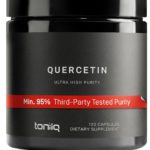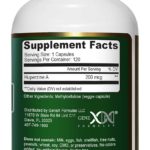If you’re considering taking PEA pills, you may be wondering about the best time to incorporate them into your routine. Palmitoylethanolamide (PEA) is known for its potential therapeutic properties and is often used as a natural supplement for managing chronic pain and inflammation. While there isn’t a definitive answer to when you should take PEA pills, it’s important to understand the compound and how it interacts with your body to determine the best approach. In this article, we’ll explore the topic further and provide some insights to help you make an informed decision about the timing of PEA supplementation.
Dosage
Recommended dosage
When it comes to taking PEA pills, it is essential to follow the recommended dosage for optimal results. The suggested dose of PEA can vary depending on the individual and the specific condition being treated. However, a common starting point is usually around 300-600mg per day.
Gradual increase
It is important to note that PEA might take some time to have noticeable effects. Therefore, it is recommended to start with a lower dose and gradually increase it over time. This allows your body to adjust to the supplement and helps to minimize any potential side effects.
Consultation with a healthcare professional
Before starting any new supplement regimen, including PEA pills, it is always a good idea to consult with a healthcare professional. They can provide personalized advice based on your individual needs and medical history. A healthcare professional can also help determine the appropriate dosage and provide guidance on how to incorporate PEA into your overall treatment plan.
Timing
With or without food
One of the great things about PEA is that it can be taken with or without food. This flexibility allows for easy incorporation into your daily routine. Whether you prefer to take your PEA pills with a meal or on an empty stomach, it should not affect the absorption or efficacy of the supplement.
Morning or evening
The timing of PEA intake can vary depending on your personal preference and the specific condition you are treating. Some people find it beneficial to take their PEA pills in the morning to start the day with the potential benefits of decreased pain and inflammation. Others prefer to take it in the evening to help promote better sleep. Ultimately, the best time to take PEA is the time that works best for you and aligns with your desired outcome.
Consistency in timing
While the specific time of day you take PEA may vary, it is important to maintain consistency in your timing. Taking PEA at the same time each day helps to establish a routine and ensures that the supplement remains in your system consistently. This can enhance the overall effectiveness of PEA and help you achieve optimal results.

Duration of use
Short-term use
PEA can be used for both short-term and long-term durations, depending on your needs. If you are experiencing acute pain or inflammation, short-term use of PEA may be appropriate. Short-term use refers to using PEA for a specific period to address a particular issue or symptom.
Long-term use
For individuals dealing with chronic pain or inflammation, long-term use of PEA may be more suitable. Chronic conditions often require consistent management, and PEA can be a valuable addition to a long-term treatment plan. Long-term use refers to using PEA on an ongoing basis to maintain symptom relief and support overall well-being.
Stopping and restarting
In some cases, you may find it necessary to stop taking PEA for a period of time. Whether you are trying a different treatment approach or need to take a break for personal reasons, it is important to follow the guidance of your healthcare professional. They can provide guidance on how to safely stop and restart PEA to ensure optimal results and minimize any potential risks.
Condition-specific timing
Chronic pain
For individuals dealing with chronic pain, the timing of PEA intake can be crucial. Taking PEA in the morning can help kickstart the day with decreased pain levels and improved mobility. However, some individuals may find that taking PEA in the evening provides better pain relief and promotes a more restful night’s sleep. It is essential to pay attention to your body’s response and adjust the timing accordingly to achieve maximum pain management.
Inflammation
When it comes to addressing inflammation with PEA, consistency in timing is key. Taking PEA at the same time each day helps to maintain a steady level of the supplement in the body, providing ongoing support in managing inflammation. Whether you choose to take it in the morning or evening, make sure to stick to your chosen timing to ensure optimal results.
Neuropathy
Neuropathy can cause discomfort and affect everyday life. When using PEA to manage neuropathy symptoms, individuals may find taking it in the morning provides relief throughout the day. Others may prefer taking it in the evening to help reduce discomfort during sleep. Experimenting with different timings and observing personal response can help determine the best approach for managing neuropathy symptoms.

Interaction with other medications
Avoiding interactions
It is crucial to be aware of potential interactions between PEA and other medications you may be taking. Certain medications, such as antidepressants or blood thinners, can interact with PEA, affecting its effectiveness or causing adverse effects. To avoid potential interactions, it is vital to inform your healthcare professional about all the medications and supplements you are currently taking.
Consultation with a healthcare professional
Before starting PEA or making any changes to your medication regimen, it is important to consult with a healthcare professional. They can evaluate your specific medical history, including the medications you are taking, and provide guidance on the best approach for incorporating PEA into your treatment plan. They may also suggest adjustments to the timing of PEA intake to minimize the risk of interactions.
Potential side effects
Common side effects
When taking PEA, the majority of individuals experience minimal side effects, if any. Common side effects, which are usually mild and transient, can include headache, stomachache, or drowsiness. These side effects often subside as your body adjusts to the supplement. If you do experience any side effects, it is recommended to consult with a healthcare professional to address any concerns and determine the appropriate course of action.
Rare side effects
While rare, some individuals may experience rare side effects when taking PEA. These can include allergic reactions, gastrointestinal disturbances, or changes in mood or behavior. If you notice any unexpected or severe side effects, it is crucial to seek medical attention immediately. Remember that everyone’s body is unique, and individual reactions to supplements can vary.
Monitoring and reporting
To ensure your safety and well-being, it is important to monitor your body’s response to PEA. If any side effects persist or worsen over time, it is important to report them to your healthcare professional. By openly communicating any changes or concerns, you can work together to establish the most effective and safe treatment plan for your specific needs.

Individual response
Observing personal response
Every individual’s response to PEA can vary. Some may experience significant pain relief and symptom improvement, while others may have a more subtle response. It is essential to stay attuned to your body’s reactions and observe any changes in pain, inflammation, or overall well-being. By actively monitoring your personal response, you can make informed decisions about the timing and dosage of PEA that work best for you.
Adjusting timing
If you find that the timing of PEA intake is not providing the desired results, it may be worth adjusting the timing to better fit your needs. Experimenting with morning or evening intake and observing how your body responds can help determine the optimal timing for maximum benefit. Remember to maintain consistency in your timing for better overall results.
Monitoring symptoms
In addition to observing your personal response, it is also important to monitor specific symptoms related to the condition you are treating. For example, if you are using PEA for chronic pain, pay attention to any changes in pain levels, mobility, or overall quality of life. By consistently monitoring symptoms, you can assess the effectiveness of PEA and make any necessary adjustments to your timing or dosage.
Combining with other supplements
Enhancing effects
PEA can be combined with other supplements to potentially enhance its effects. For example, combining PEA with omega-3 fatty acids or curcumin, which are known for their anti-inflammatory properties, may offer synergistic benefits in managing inflammation and pain. However, it is important to consult with a healthcare professional before combining supplements to ensure appropriate dosages and minimize the risk of interactions.
Avoiding negative interactions
While combining supplements can be beneficial, it is crucial to avoid potential negative interactions. Some supplements may interact with PEA, affecting its efficacy or causing adverse effects. To ensure safe supplementation, it is recommended to consult with a healthcare professional before combining PEA with other supplements. They can provide personalized advice based on your specific needs and help you navigate potential interactions.
Consultation with a healthcare professional
When considering combining PEA with other supplements, it is always recommended to consult with a healthcare professional. They can assess your individual needs and medical history, providing tailored advice on the best supplements to combine with PEA. By working with a healthcare professional, you can ensure safe and effective supplementation to support your overall health and well-being.
PEA dosage forms
Tablets or capsules
PEA is available in various dosage forms, including tablets and capsules. These are the most common forms and are convenient for daily supplementation. Tablets or capsules offer precise dosing and are easy to incorporate into your daily routine. Make sure to follow the instructions provided on the packaging or consult with a healthcare professional for the appropriate dosage based on your specific needs.
Tinctures or liquids
PEA is also available in the form of tinctures or liquids. These forms can be an alternative for individuals who have difficulty swallowing tablets or capsules. Tinctures or liquids provide more flexibility in dosage adjustments and can be easily mixed with other liquids or taken directly. Again, it is important to follow the recommended dosage instructions or consult with a healthcare professional to ensure proper dosing.
Powders or granules
Another option for PEA supplementation is in the form of powders or granules. These can be mixed into liquids, such as water or juice, or added to foods for easy consumption. Powders or granules offer versatility in dosing and can be particularly useful for individuals who prefer a more customized approach to their supplementation. As always, follow the dosage instructions provided or seek guidance from a healthcare professional.
PEA and sleep
Impact on sleep
PEA has been reported to potentially have an impact on sleep. Some individuals may experience improved sleep quality and duration when taking PEA, while others may not notice any significant changes. If you are specifically taking PEA to support better sleep, it is important to pay attention to your body’s response and adjust the timing accordingly to maximize its potential benefits.
Timing for better sleep
While the specific timing of PEA intake for better sleep can vary, many individuals find that taking it in the evening, closer to bedtime, can help promote a sense of relaxation and improve sleep quality. However, it is crucial to experiment with different timings and observe how your body responds. The goal is to find the optimal timing that works best for your sleep needs and aligns with your desired outcome.
Consultation with a healthcare professional
If you are considering taking PEA for improved sleep or have concerns about its potential impact on sleep patterns, it is recommended to consult with a healthcare professional. They can provide personalized advice based on your unique circumstances and help determine the best approach for incorporating PEA into your sleep routine. By working together, you can optimize the benefits of PEA while ensuring a good night’s rest.
In conclusion, PEA pills can be a valuable addition to your daily routine for managing chronic pain and inflammation. By following the recommended dosage and consulting with a healthcare professional, you can ensure safe and effective supplementation. Whether you choose to take PEA in the morning or evening, consistency is key to achieving optimal results. Monitoring your individual response, adjusting timing if necessary, and combining supplements with caution can further enhance the benefits of PEA. Remember that everyone’s body is unique, so it is important to listen to your body and make choices that align with your specific needs. With proper usage and guidance from a healthcare professional, PEA pills can potentially help improve your overall well-being and quality of life.







